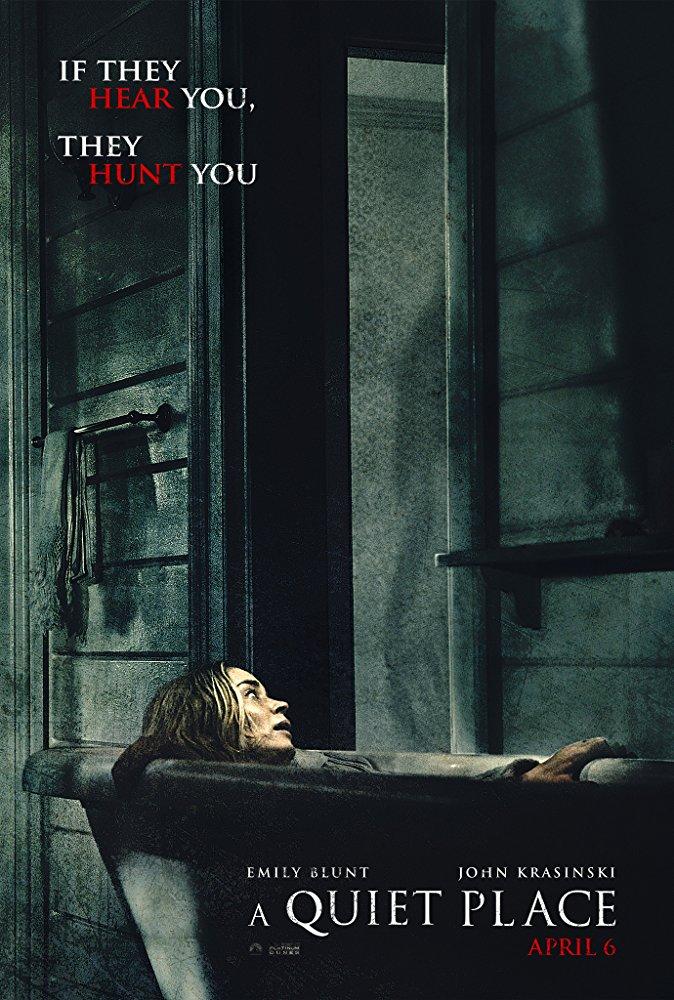Directed by John Krasinski, “A Quiet Place” is not only a brilliant cinematic masterpiece, but a breath of fresh air for horror movie fans. If Jordan Peele proved anything with his directorial debut, “Get Out,” it’s that you can terrify an audience with the right amount of craft, time and energy. Krasinski’s horror film debut is extremely original and calculated, combining the best elements of dramas, thrillers and horror.
The film adds itself to the very top of the list of new age silent thrillers where it joins movies like “Hush” and “Don’t Breathe.” With a few pieces of dialogue and even less music, the audience watches the story unfold almost purely through visual storytelling. Every sound included in the film creates total dread and prolonged silence forces the audience to pay attention to details that are often overlooked, such as body language, facial expressions and other visual cues throughout the film, rather than rely on dialogue.
Beginning on “Day 89” of a puzzling, post-apocalyptic invasion, the only people in sight are a desperate family grabbing medication off of a shelf in an abandoned pharmacy. Communicating only through sign language, the family members include father Lee Abbott, (John Krasinski), mother Evelyn Abbott (Emily Blunt), deaf daughter Regan Abbott, (Millicent Simmonds), eldest son Marcus Abbott (Noah Jupe), and youngest son Beau Abbott (Cade Woodward). They work their way silently through the woods back to their farmhouse until youngest son Beau shows the audience why noise is so deadly in this post-apocalyptic dystopia. Setting the stage, audience members find themselves as terrified, and silent, as the characters in the film.
Through exceptional visual storytelling, it becomes clear that futuristic, alien-like creatures have taken over the planet and operate on sonar, reaching their prey in seconds after it makes any sound. The family’s noise-cancelling survival tactic – solely using sign language to communicate, walking barefoot on sand, and more – is clear to the audience as being the reason the family has survived for so long. Their exceptional survival skills don’t go unnoticed, and support the threading themes of heroism, sacrifice and survival. The plot builds when the film fast forwards a little over a year and Blunt’s character finds herself eight and a half months pregnant, building on the fear of the creatures and the audience’s anticipation of what’s going to happen when the baby is born. A heart-wrenching, bittersweet finale brings the film full circle and may even bring a tear to the viewer’s eye.
Blunt, Krasinski and Simmonds steal the show and bring a sense of emotional realism to the plot that intensifies the viewer’s overall experience. “A Quiet Place” sets itself apart from other horror films by creating genuine emotion, and providing a realistic portrayal of characters that pull at the audience’s heart strings. Krasinski and Blunt’s real life marriage wholeheartedly translates to the big screen, as the love they have for one another and their children feels raw and authentic; it becomes incredibly easy to get lost in this plot.
Equally as exceptional and crucial to the ultimate success of this movie would be the four-time award-winning cinematographer, Charlotte Bruus Christensen. Christensen creates artistic cinematic gold in every frame of this film with perfectly executed attention to detail. With scenes reminiscent of iconic visual moments in “Jurassic Park” and “Children of the Corn,” Christensen showcases her gift for filmmaking. Krasinski has also shown his gift in the film industry as a film director. He has set the bar high for his work on future projects. If you are a fan of films such as “Alien,” “The Descent,” “Hush,” “10 Cloverfield Lane,” or “World War Z,” it is highly likely you will completely fall in love with this film.





![[Both photos courtesy of sonoma.edu]
Ming-Ting Mike Lee stepped in as the new SSU president following Sakakis resignation in July 2022](https://sonomastatestar.com/wp-content/uploads/2024/04/CC4520AB-22A7-41B2-9F6F-2A2D5F76A28C-1200x1200.jpeg)


























